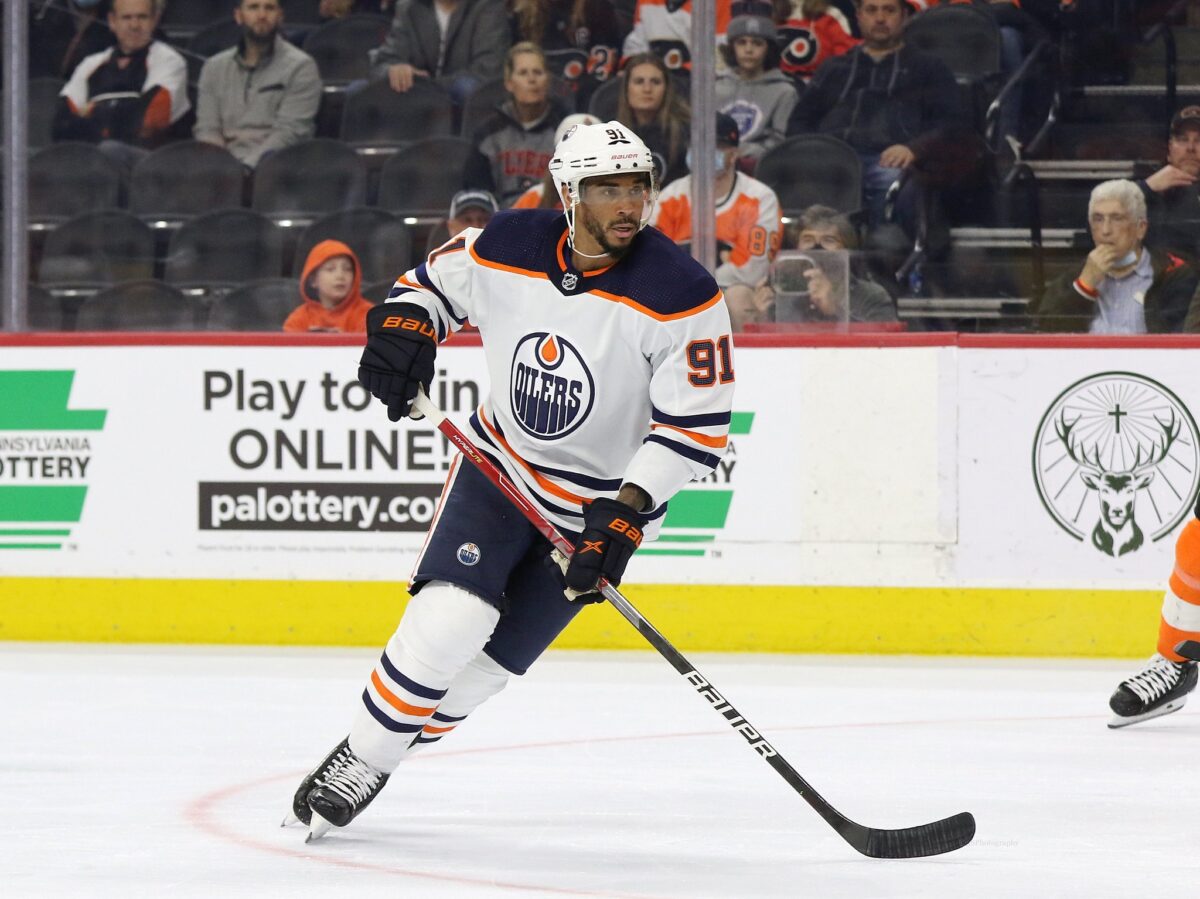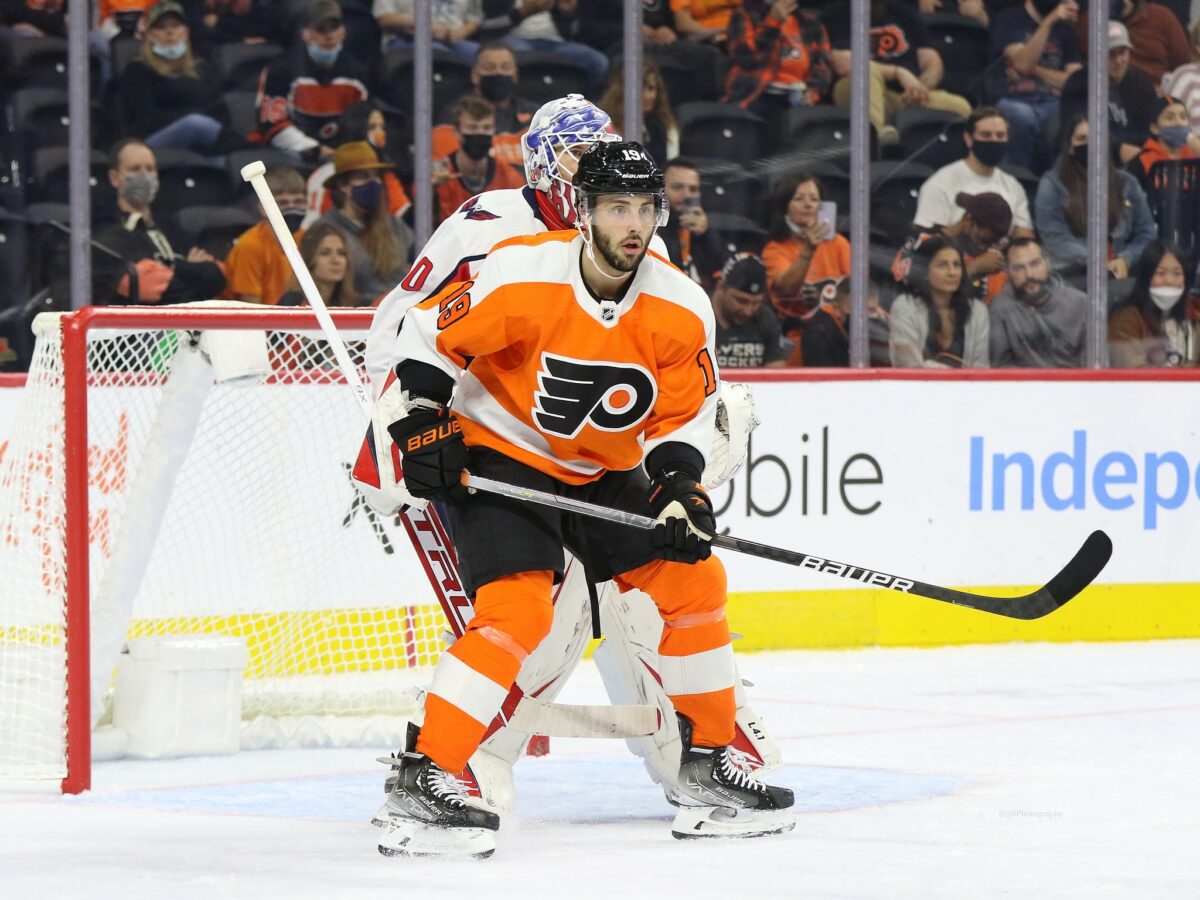Now that the dust has settled and the NHL Trade Deadline has passed, teams are locked and loaded with their rosters set for the playoff drive. The Edmonton Oilers didn’t make a giant splash for a goaltender that Oil Country was hoping for, but they did add Brett Kulak and Derick Brassard, two-depth pieces that will benefit the team.
Hockey analyst Louie DeBrusk was recently on the radio show “Oilers Now” with Bob Stauffer and stated when healthy, he’d put the Oilers’ forward group up against any team in the NHL. For as much criticism general manager Ken Holland has received in the past, credit where credit is due, he’s constructed a stellar set of forwards.
The Oilers are fifth in the league in man-games lost due to injury, but they’re starting to get healthy. Jesse Puljujarvi recently returned from injury on March 19 against the New Jersey Devils. Ryan Nugent-Hopkins injured his shoulder on Feb. 26 against the Florida Panthers and is expected to return to the lineup this week. When he returns, the Oilers will have one of the deepest set of forwards that should be able to stack up to the NHL’s best. Let’s take a look at some possible line combinations for the playoff stretch.
Kane – McDavid – Yamamoto
The addition of Evander Kane was like an early trade deadline pick-up in itself. The power forward has come as advertised so far this season. He’s on pace for 44 goals in an 82-game season, he hits and isn’t afraid to muck it up after the whistle. If he can stay on the straight and narrow, the Oilers should try and re-sign him to a short-term deal.

Kane started his campaign playing with McDavid and produced two goals and two assists in five games. When head coach Jay Woodcroft coached his first game with the Oilers on Feb. 11, he moved the left-winger over to play on Leon Draisaitl’s wing for 13 games and he tallied six goals, four assists. I initially wrote he was a better fit with the German center, but since reuniting with McDavid on March 12th, he’s tallied five goals and two assists. In his second stint playing with the captain, he’s been more in sync, not forcing plays and playing with more patience. He’s still looking to pass to McDavid, but he’s also rushing the puck himself when the opportunity presents itself, like his wrap-around goal in their win over the New Jersey Devils.
McDavid is the superstar that will produce big points, but Kane will pick up points while creating space with his physicality. Meanwhile, Kailer Yamamoto is a big part of the line and has done a superb job with his puck retrieval. For being short-statured, he hits heavy and separates the opposition from the puck, while being able to pass it to the captain in full flight. The trio of Kane (power forward), McDavid (playmaking superstar), and Yamamoto (skilled puck retriever) showed their potential with an even-strength goal against the Colorado Avalanche on March 21, and they have all the ingredients to be a high-scoring first line.
Hyman – Draisaitl – Puljujarvi
The return of Jesse Puljujarvi was also like a trade deadline pick-up. He was rusty in his return against the Buffalo Sabres on March 17, after a month out of the lineup, but he was a difference-maker in the next game. The Finnish forward picked up two assists as the trio of him, Leon Draisaitl and Zach Hyman — who each picked up a goal — went to work down-low against defenders in a competitive tilt against the New Jersey Devils.
On any other team, Hyman, Draisaitl, and Puljujarvi are the first-line, but the fact they’re the Oilers’ second line is a luxury. All three players are skilled, excellent on the cycle, and protect the puck well. If the Oilers squeeze into the playoffs, this line will be relied upon heavily. McDavid’s will be about tenacity, speed, and skill. But when this second line of players all above 200-pounds hit the ice, it’ll be a combination of skill, strength, and grinding down the opposition down-low.
Draisaitl is cerebral and likes to slow the game down. He’s the playmaker that holds onto the puck and looks for a play. Both Hyman and Puljujarvi are extremely mobile on the ice, and they’ll be able to get open into prime scoring spots to receive the big German’s passes. At the same time, all three players are a threat on the rush but can drive the puck hard to the net individually as well.
Foegele – Nugent-Hopkins – Ryan
When Nugent-Hopkins returns to the lineup, Woodcroft should reunite this previously effective third line. They were initially put together on Feb. 11 against the New York Islanders. Though they were quiet in their first game together, they found success in the next one against the San Jose Sharks, when their line created two goals in the first 7:10 of the game.
The trio was effective in providing secondary scoring, with a combined 12 points in eight games, before Nugent-Hopkins went down with an injury. This third line is hardworking, smart, and they keep it simple. They play in straight lines and grind out goals that usually aren’t contenders for the highlight of the night. Foegele has only eight goals in 63 games, and while I believe he has much more potential to score, he’s fast and very aggressive on the forecheck. Ryan is not a speedster by any means, but he gets around the ice well. He’s smart with the puck, usually putting it in the right spots. He’d be the right-wing on this line, but he can fill in on defensive draws as well. He’s been an ace in the circle this season with a 57.4 percent faceoff percentage.
Nugent-Hopkins solidifies this line — he’s a top-six player with top-six skill. Like McDavid and Draisaitl, he’s the playmaker on his line, while also providing the defensive responsibility generally expected of a third-line center. He summarized the line and their simplicity, saying, “We keep it simple, we go get pucks, and we make plays from there.. we put pucks deep and we’re coming up with it. Obviously, if you’re going to dump it in you have to go get it.” The first two lines will see the opposing team’s top defensemen, but this one should create mismatches and feast on bottom-pairing defenders.
Brassard – McLeod – Kassian
The addition of Brassard is great for the Oilers’ bottom-six depth. He’s played center most of his career but played left-wing most of the season with the Philadelphia Flyers. He does not produce offense like he once did when he recorded 60 points in the 2014-15 season, but he’s still a reliable veteran player. Most importantly, he’s battle-tested with 117 playoff games under his belt. Should any of the Oilers’ centermen fall out of the lineup due to injury, he should be able to fill in in a pinch.
Devin Shore has been playing well as of late with two goals and an assist in his last five games, but the addition of Brassard will create healthy competition for the 12th forward spot. With Josh Archibald’s inability to play games in the United States due to his unvaccinated status, it’s unclear what the future holds for him.

That said, Brassard still has gas left in the tank at 34 years old. With his 16 points in 31 games, he’s on a 41-point pace in an 82-game season and would fit in nicely on the left side of centerman, Ryan McLeod. He’s also 51.3 percent in the faceoff dot this year and can help win draws.
Related: Oilers Acquire Derick Brassard: Everything You Need to Know
McLeod has come into his own as of late. He may only have 14 points, but his growth as a player has been noticeable. He skates fluidly and transports the puck through the neutral zone effortlessly. Zack Kassian, the right-winger on this line, had a spirited fight last Saturday against Mason Geersten, which seemed to rally the Oilers en route to a 6-3 win. He’s missed 22 games this season due to injuries and has been inconsistent the last couple of years, missing 17 games last season. He can redeem himself down the stretch by being consistent— finishing checks and agitating. If Kassian can be steady down the playoff push, in combination with McLeod’s speed and Brassard’s veteran savviness, they have the recipe to be a solid fourth line.
This is the most balanced set of forwards the Oilers have had in years, and they finally have a bottom-six that can support McDavid and Draisaitl. When healthy, this group can go pound for pound with the best in the NHL.
Would you roll out these line combinations for the playoff push and into the playoffs? Have your say in the comments below.
